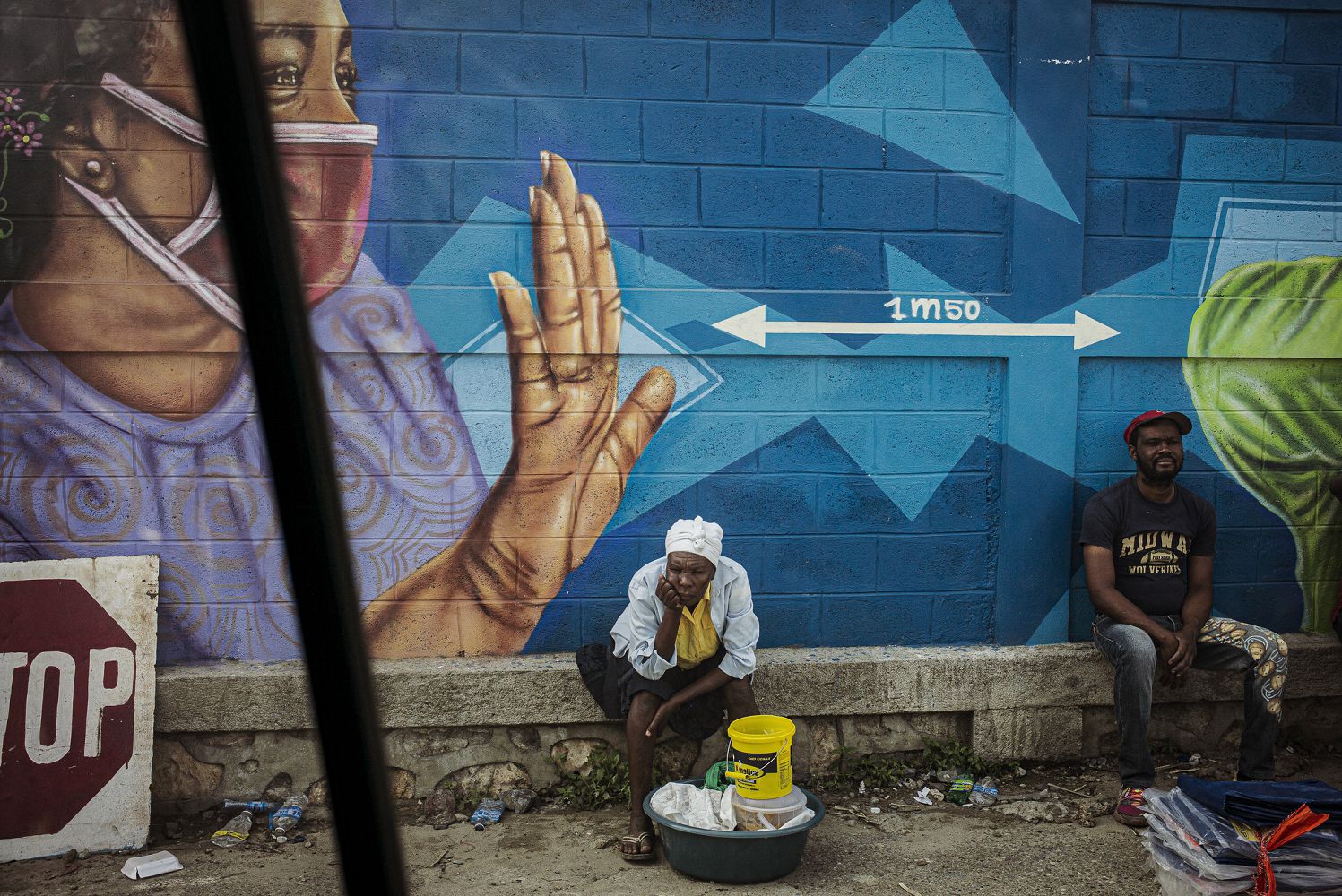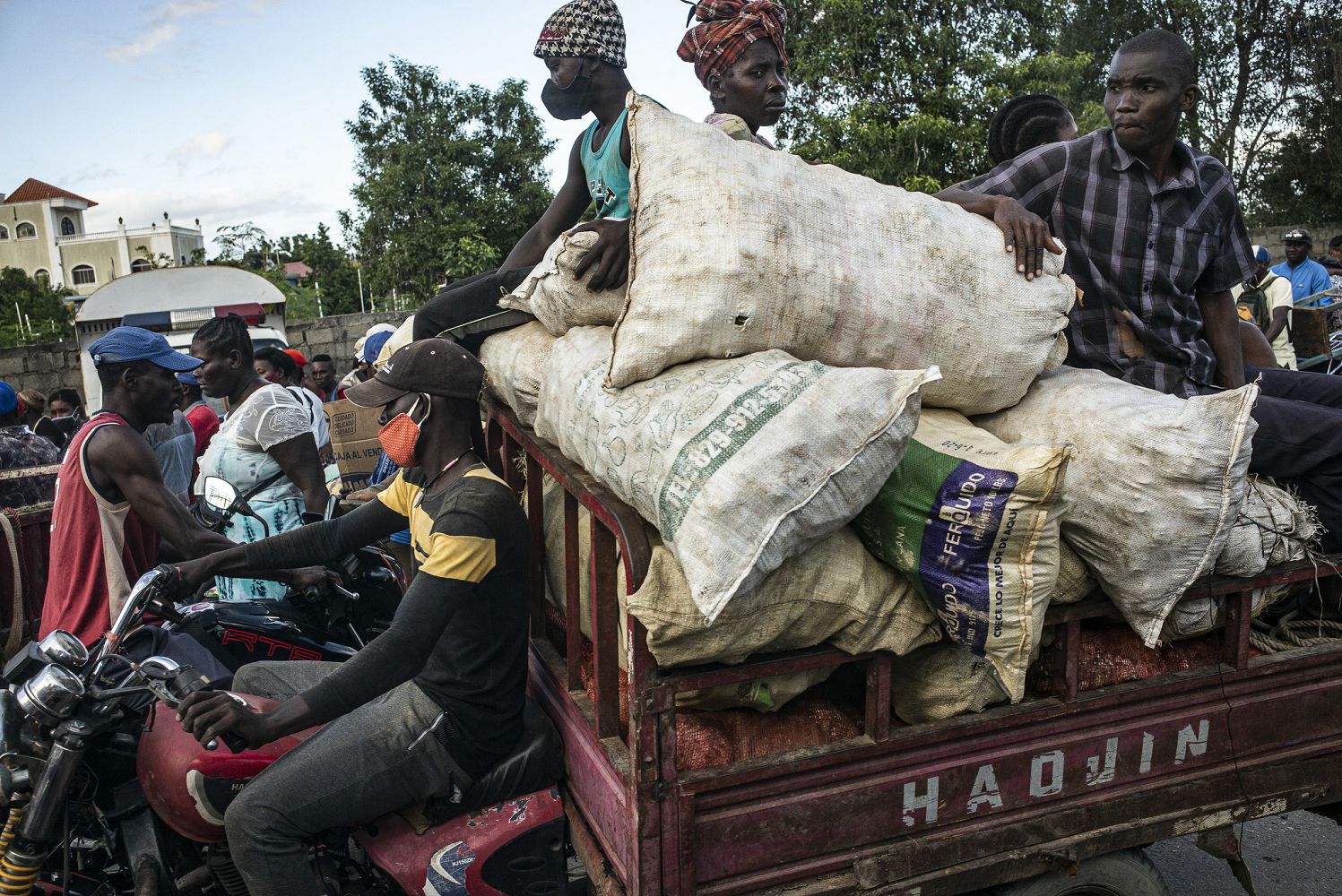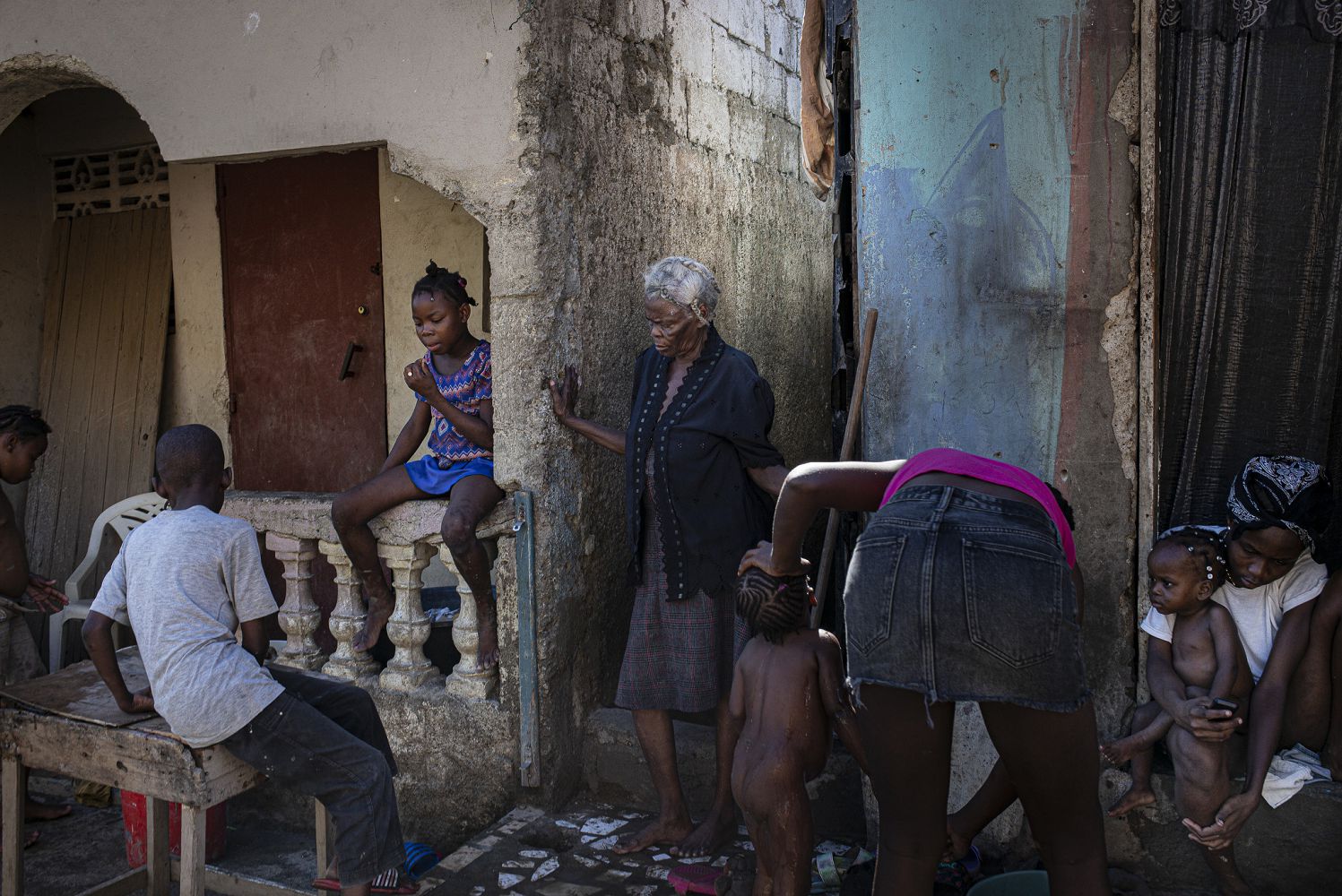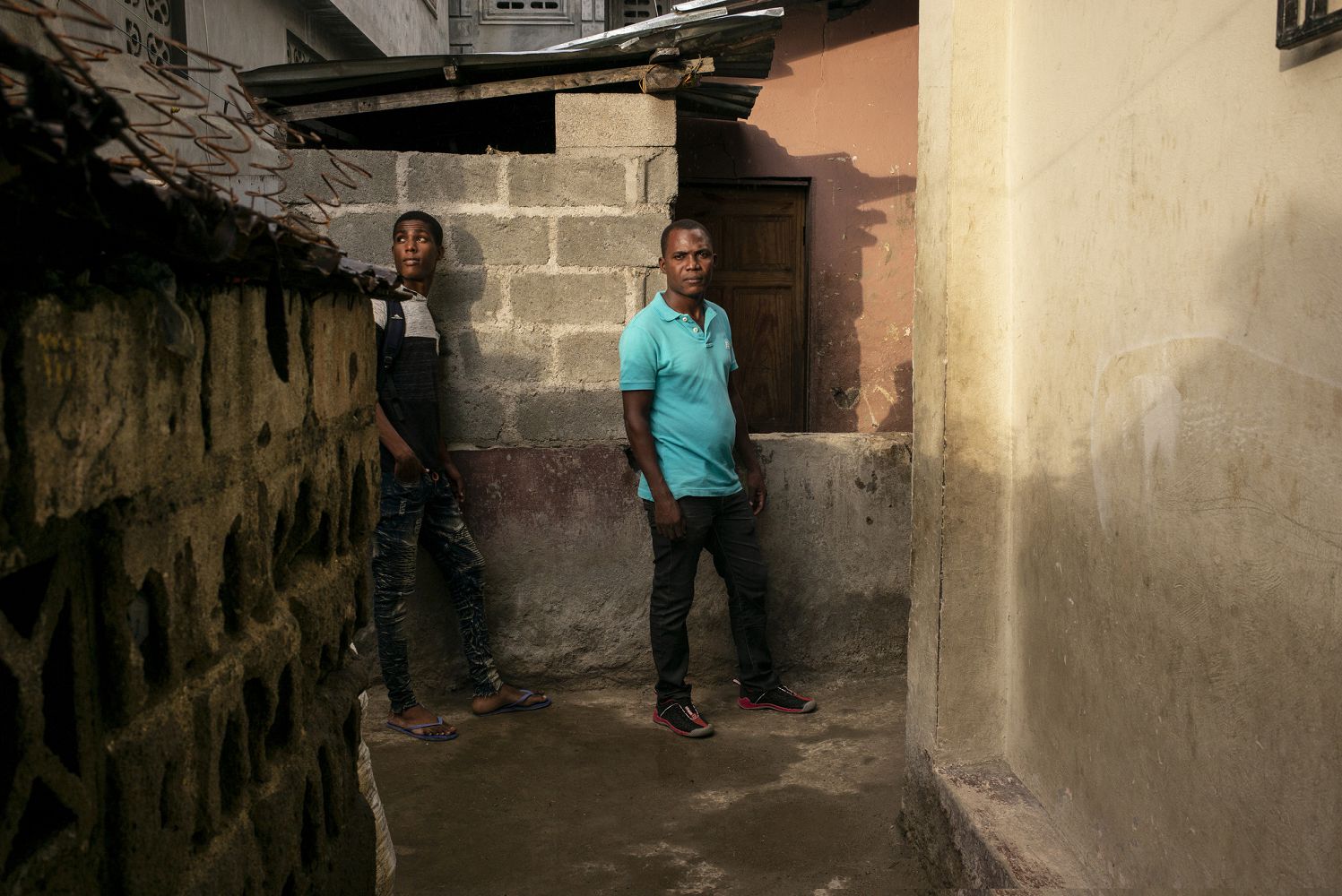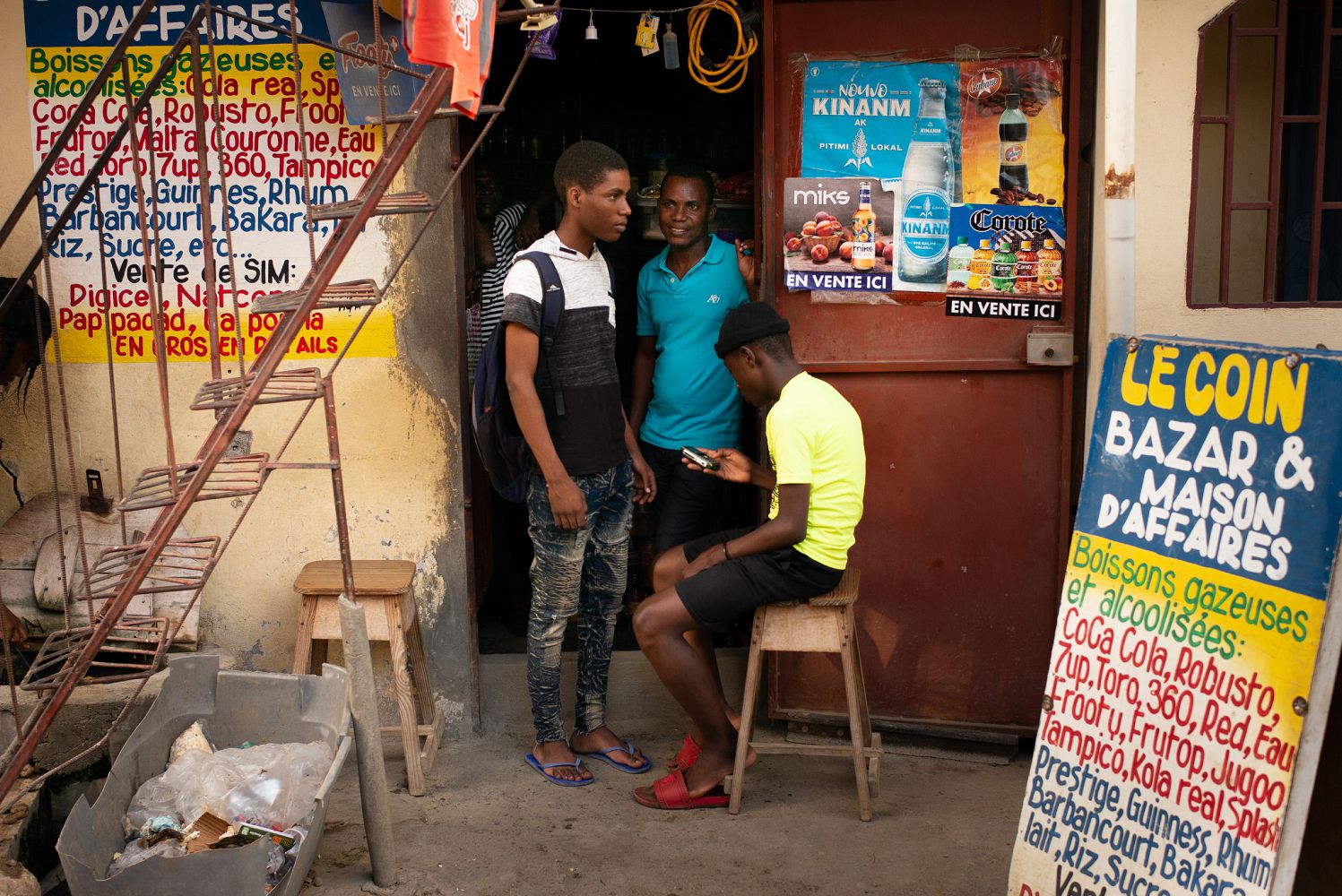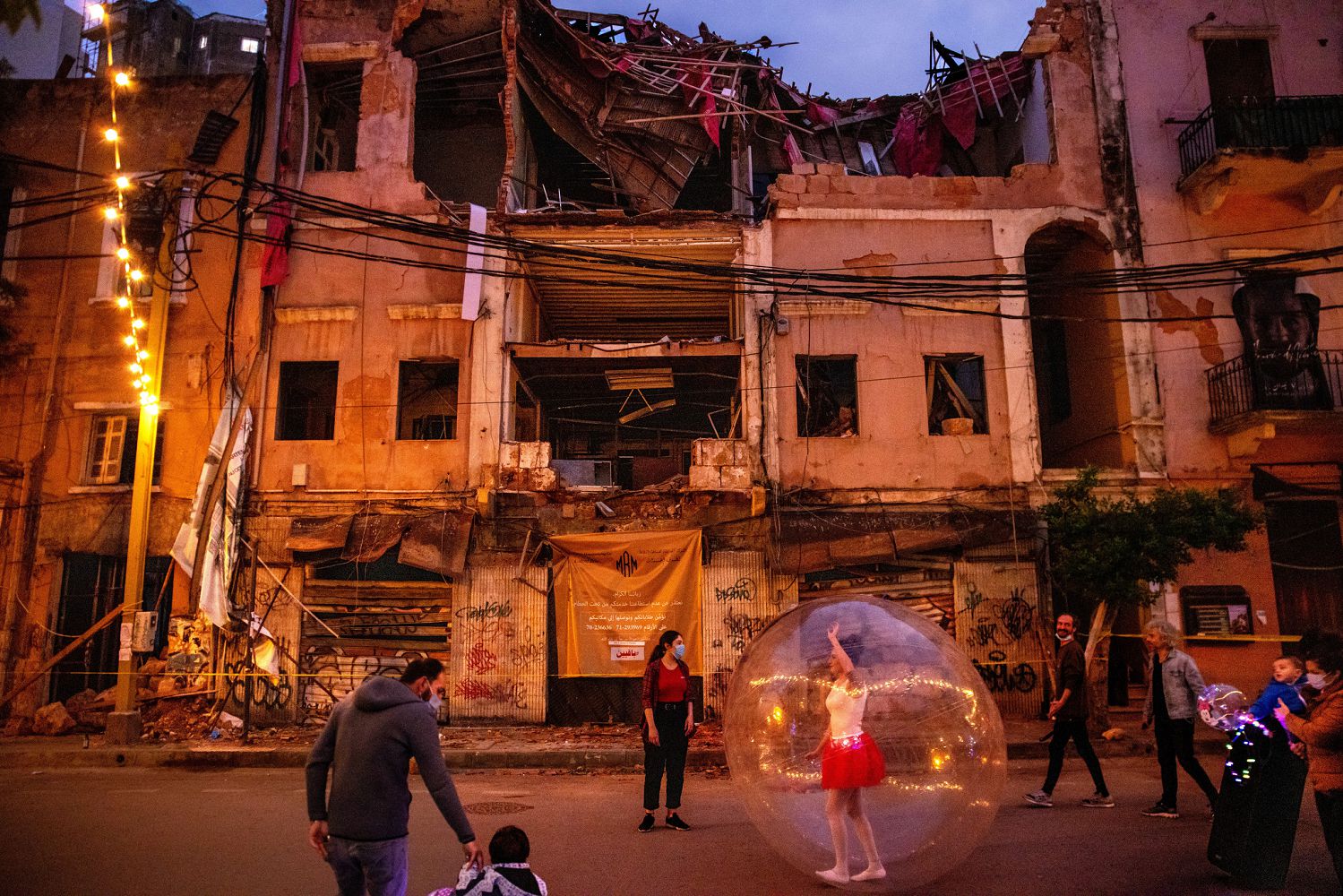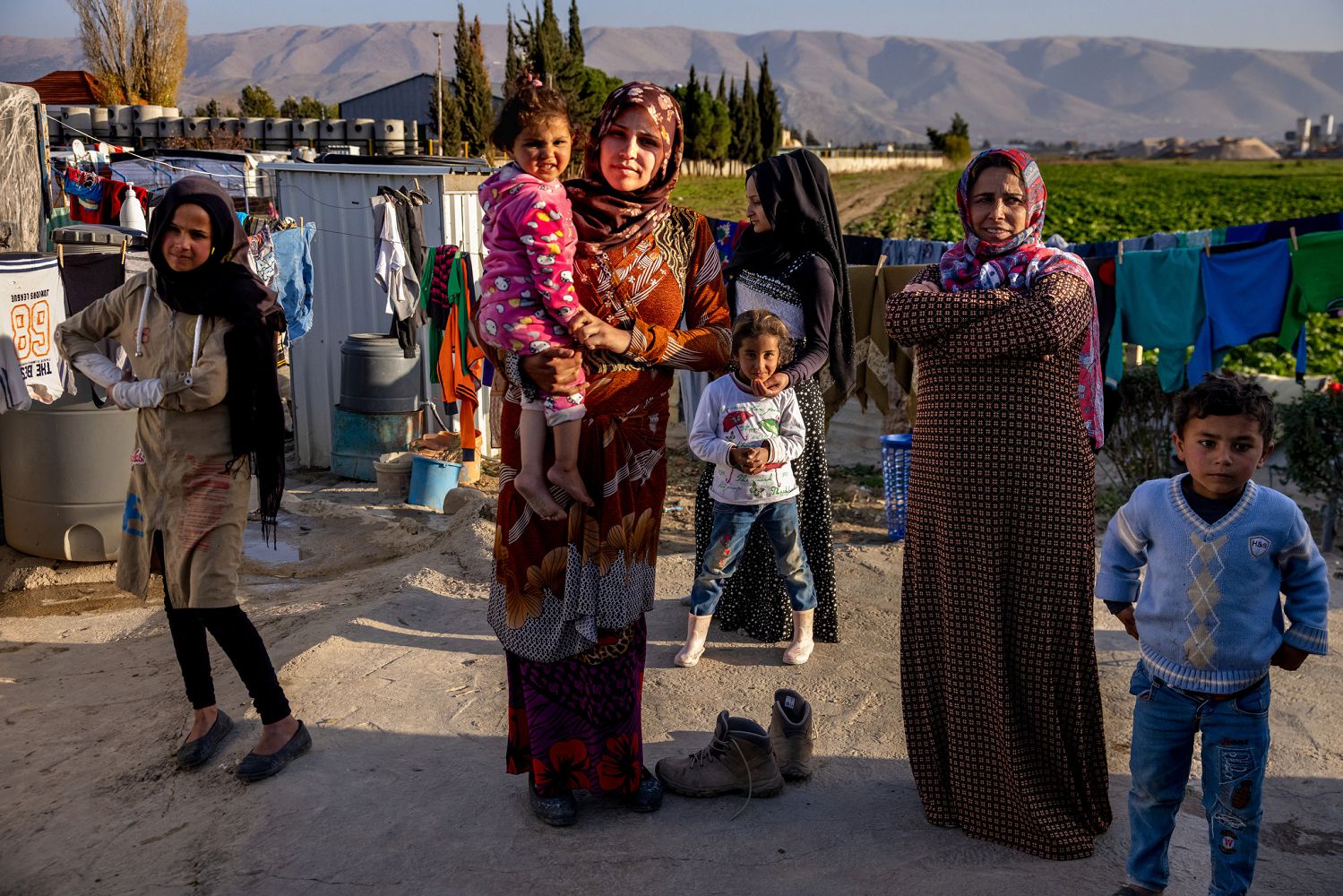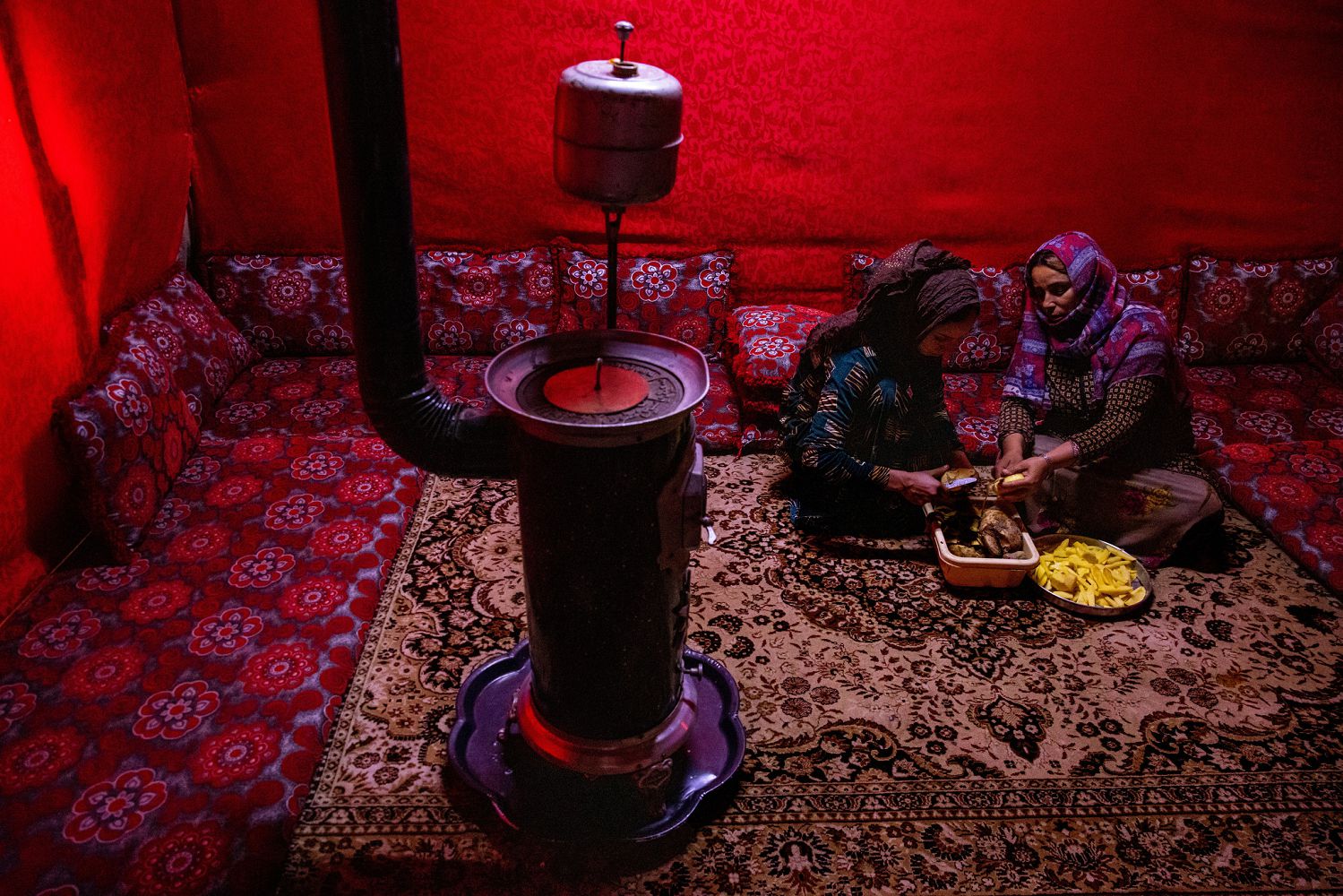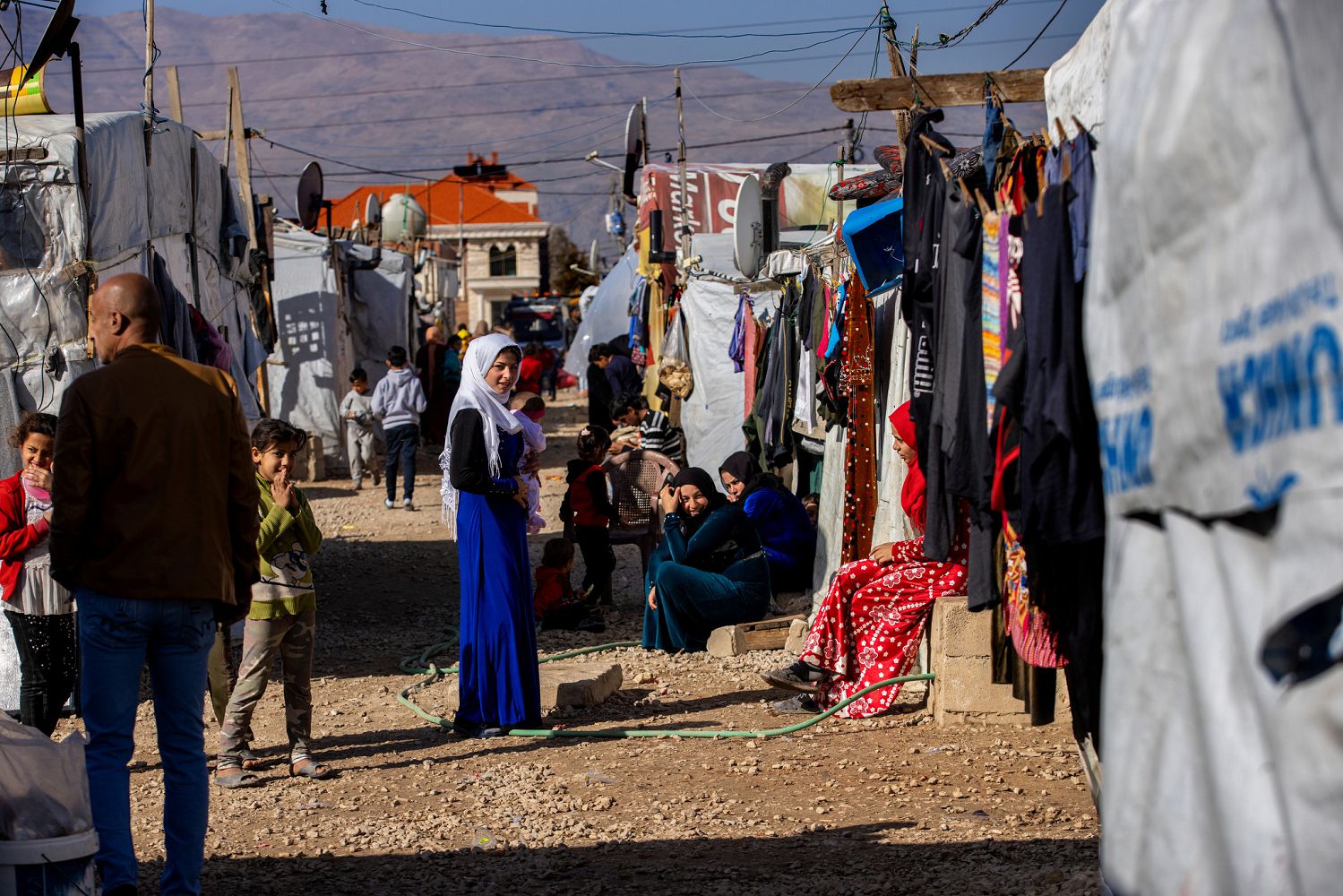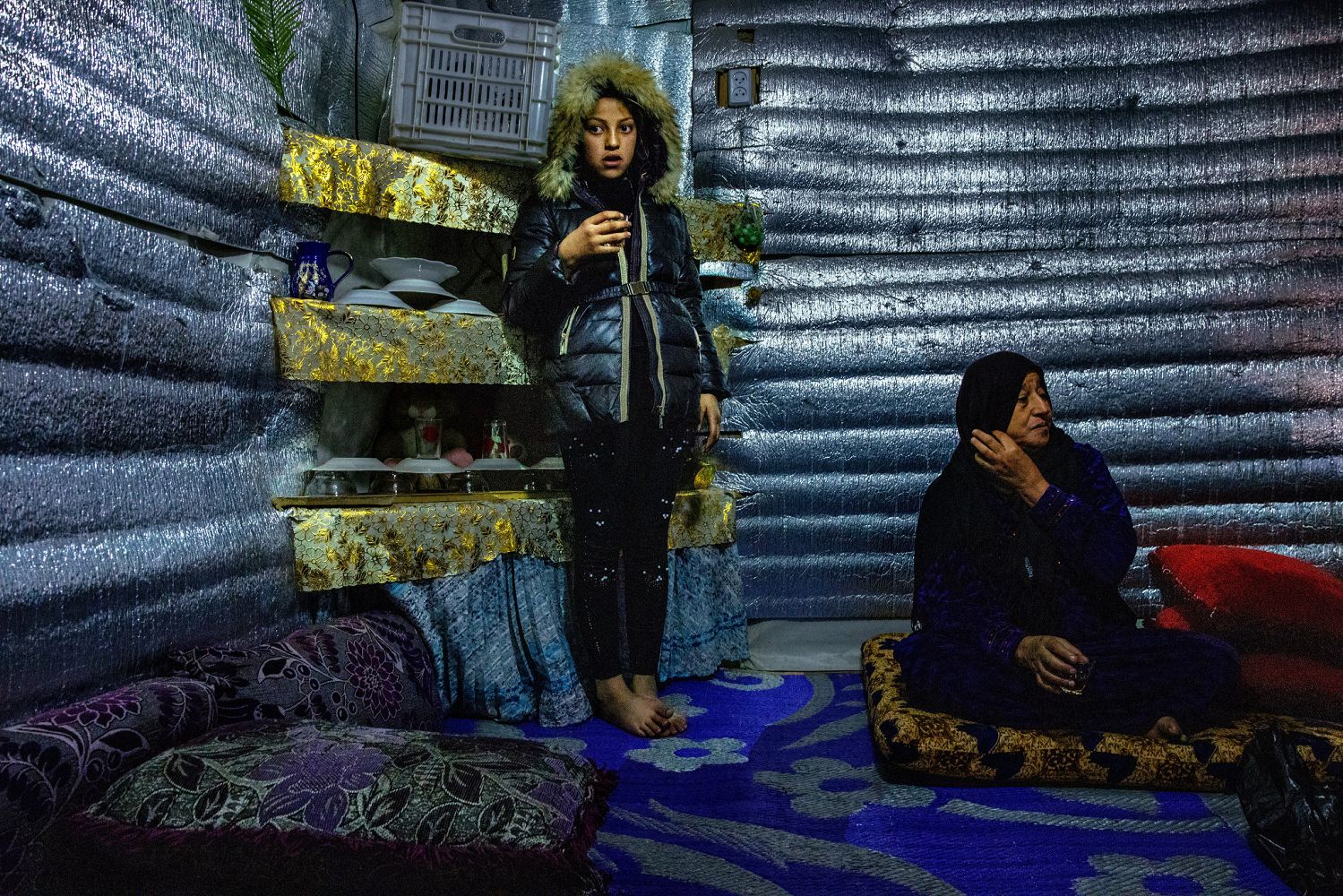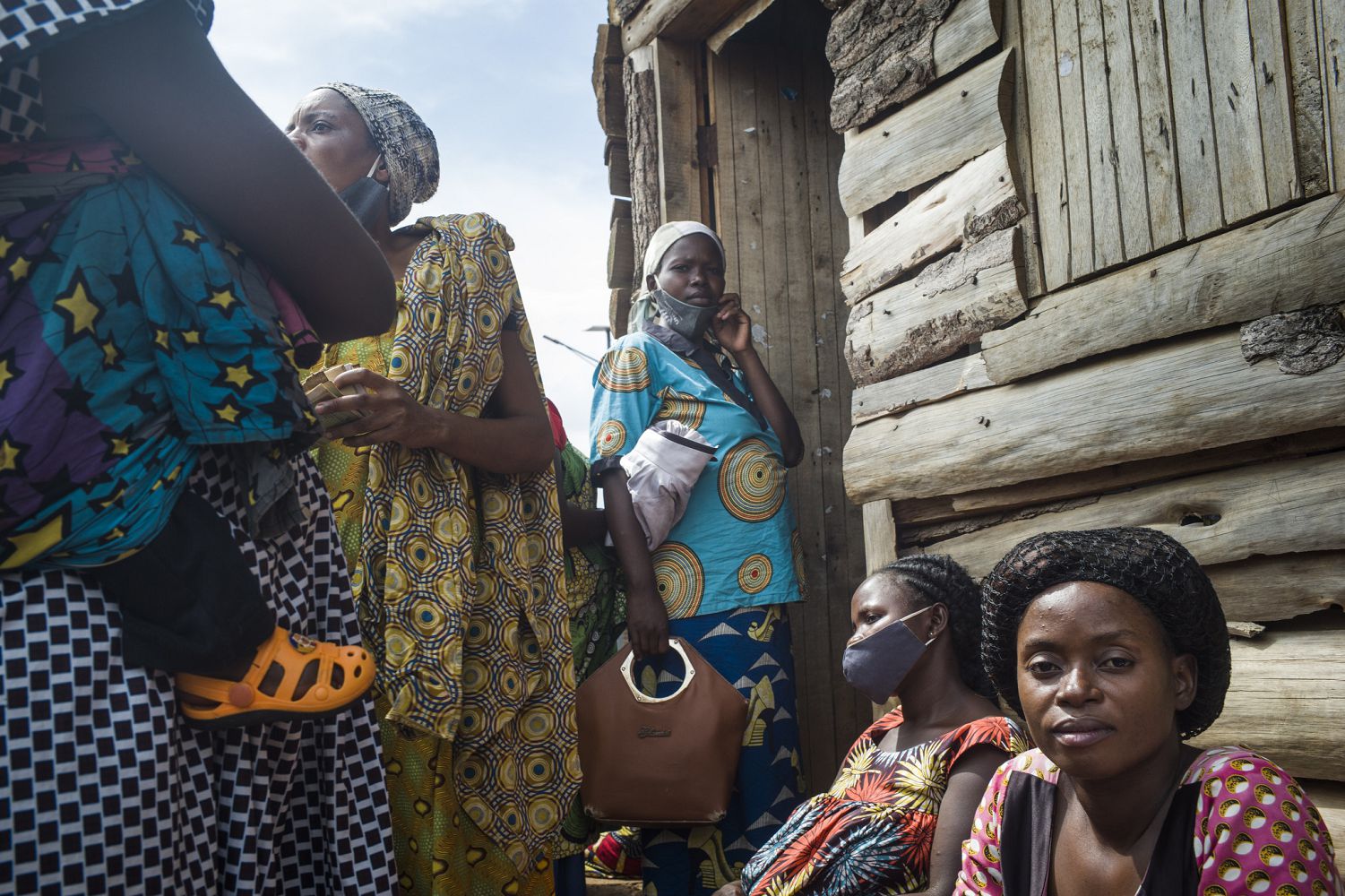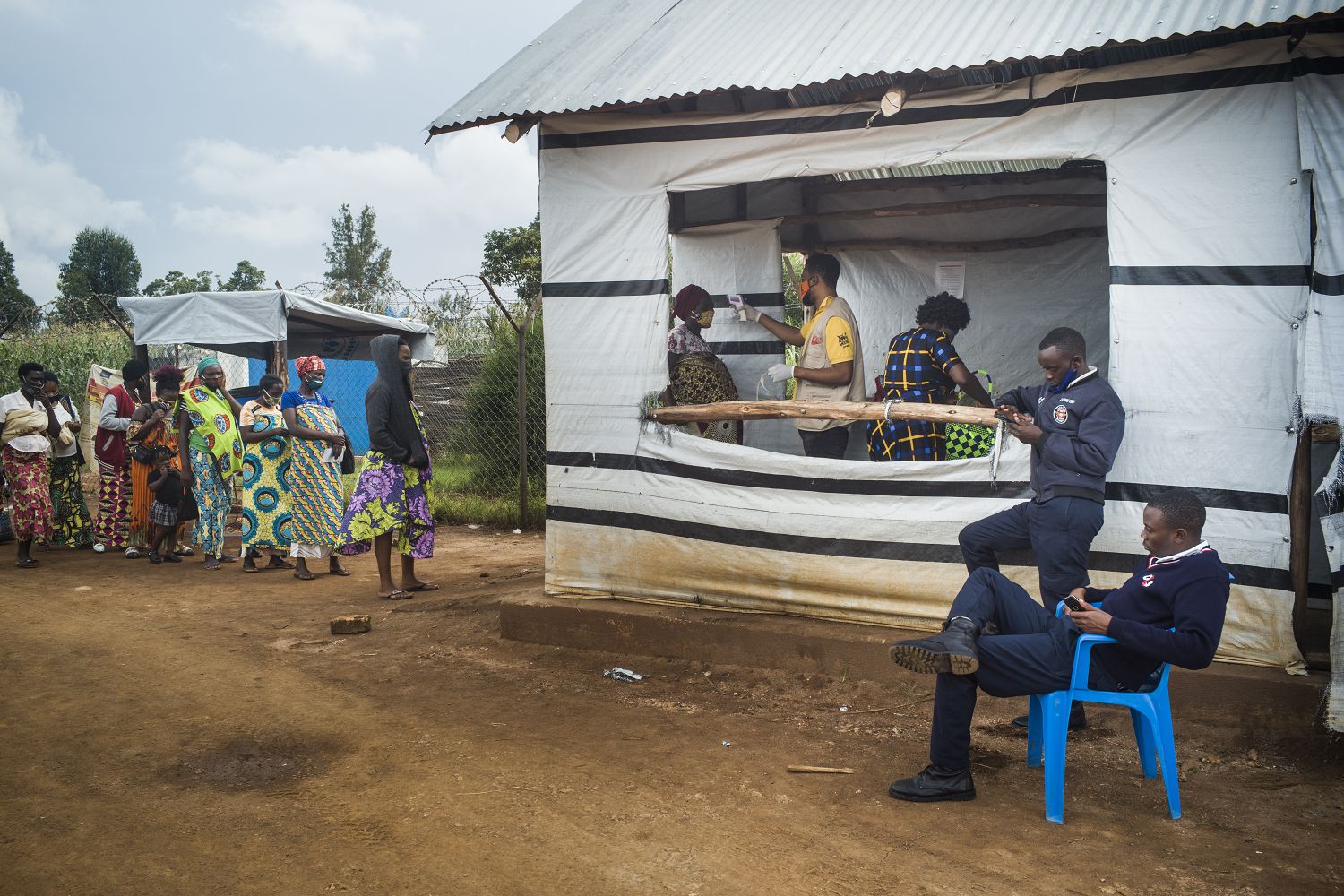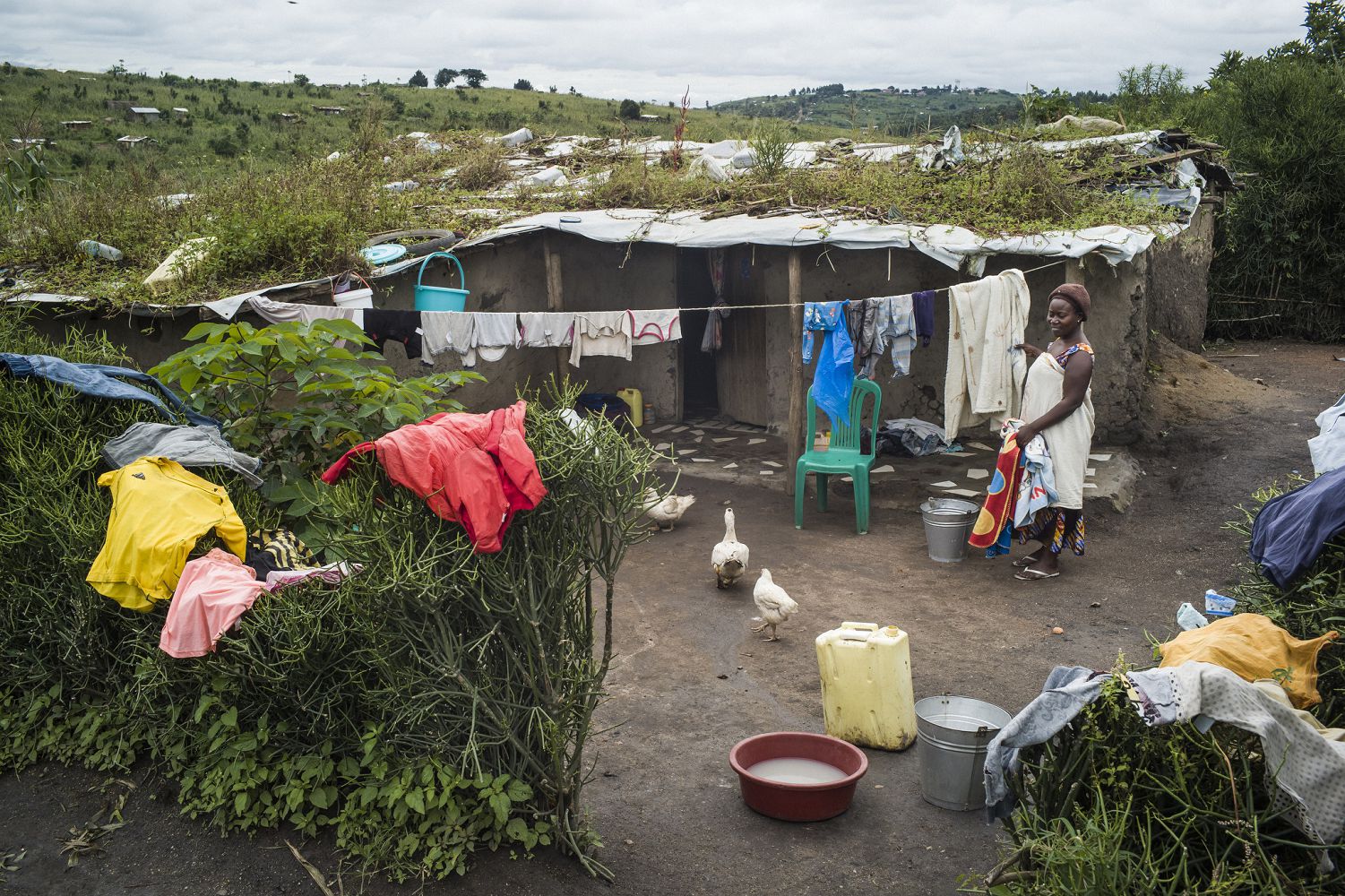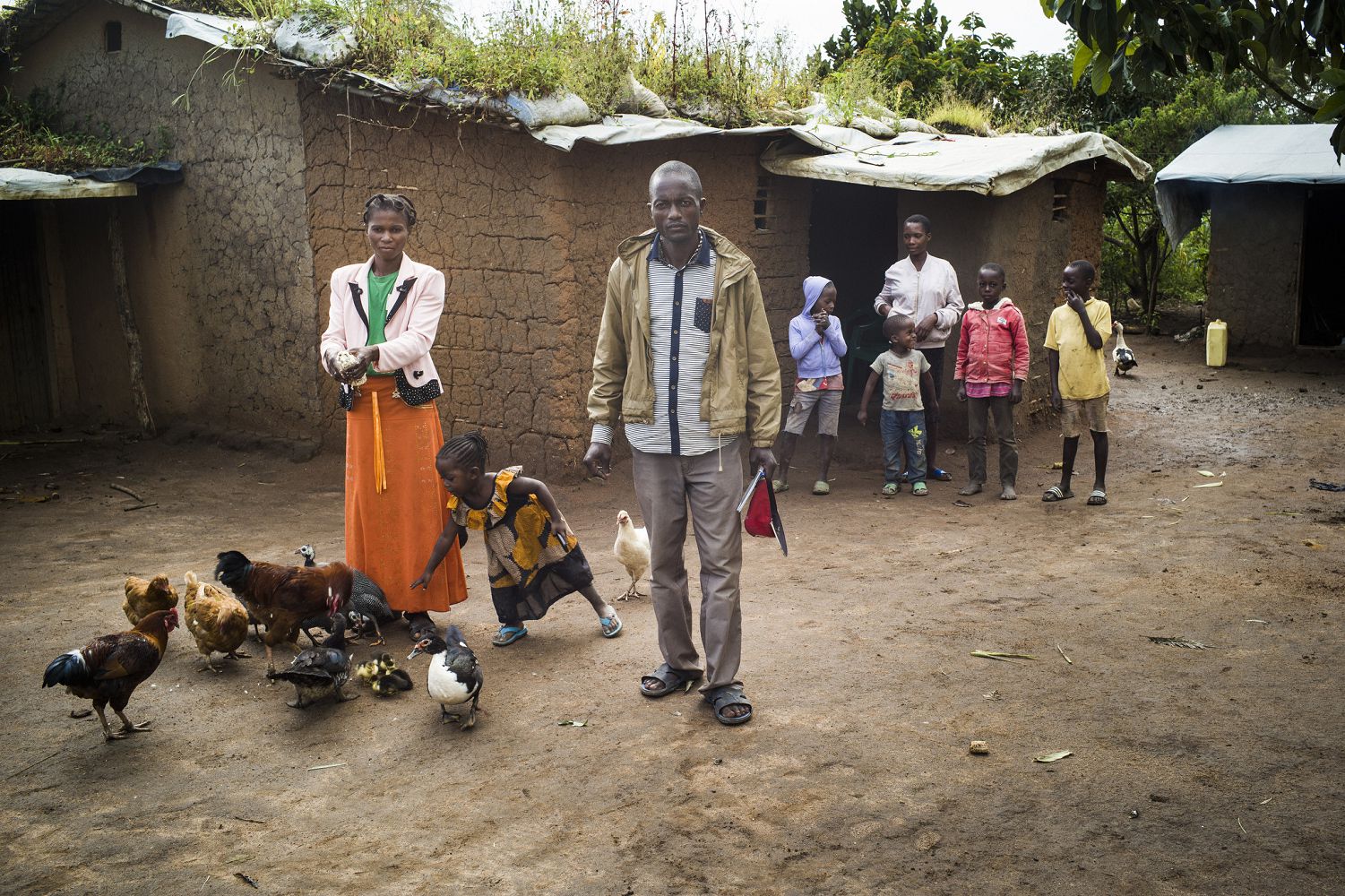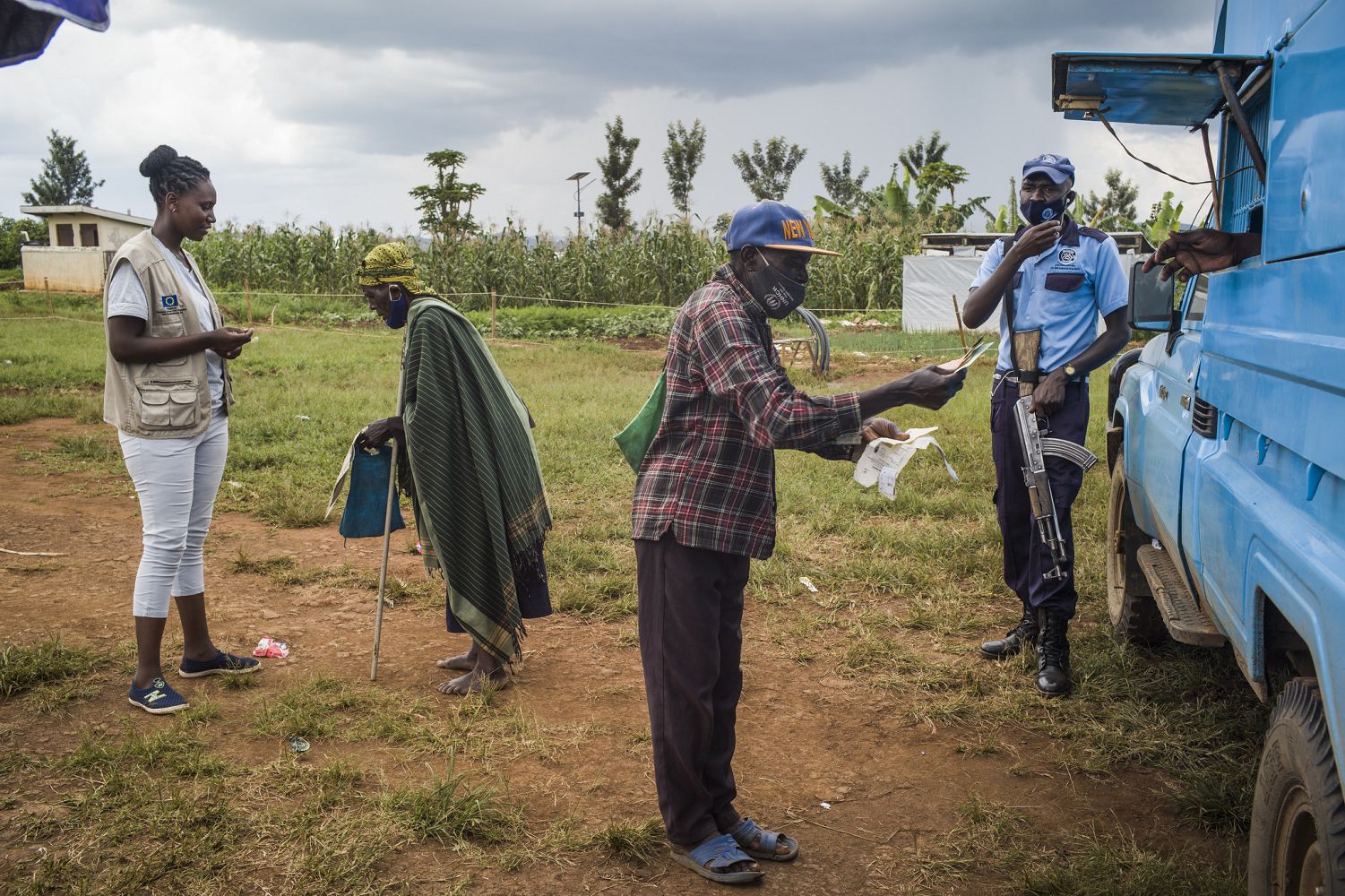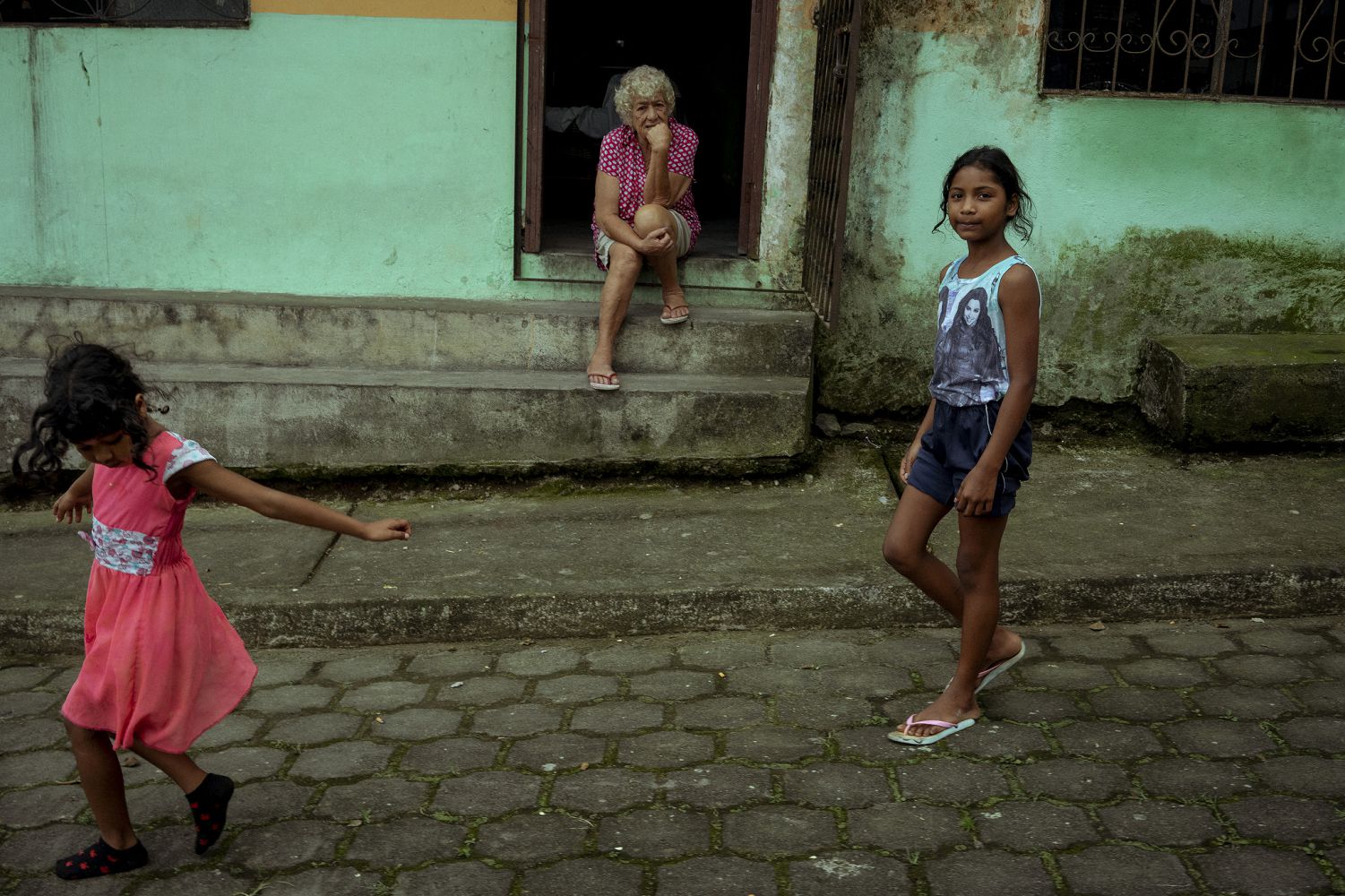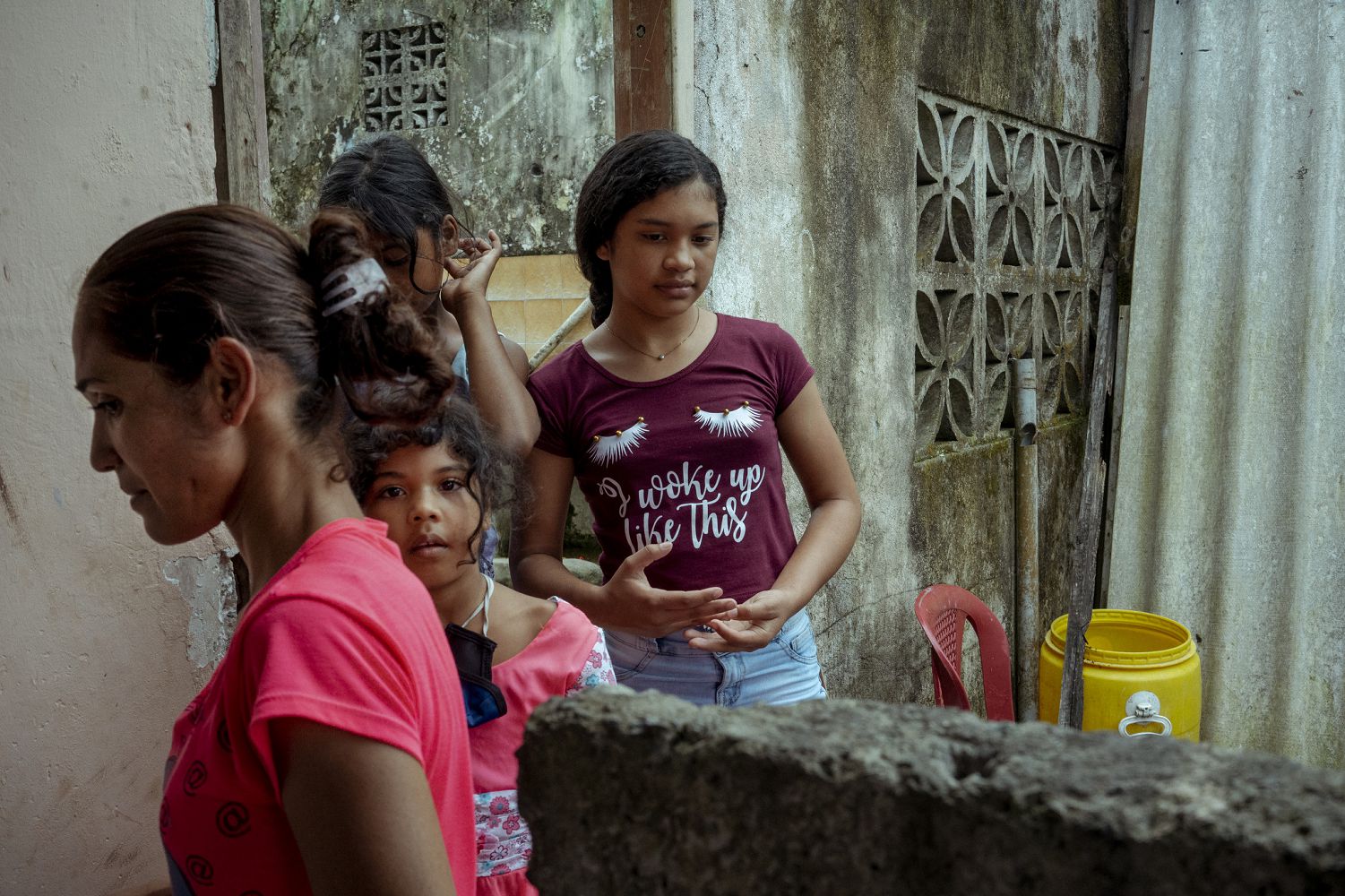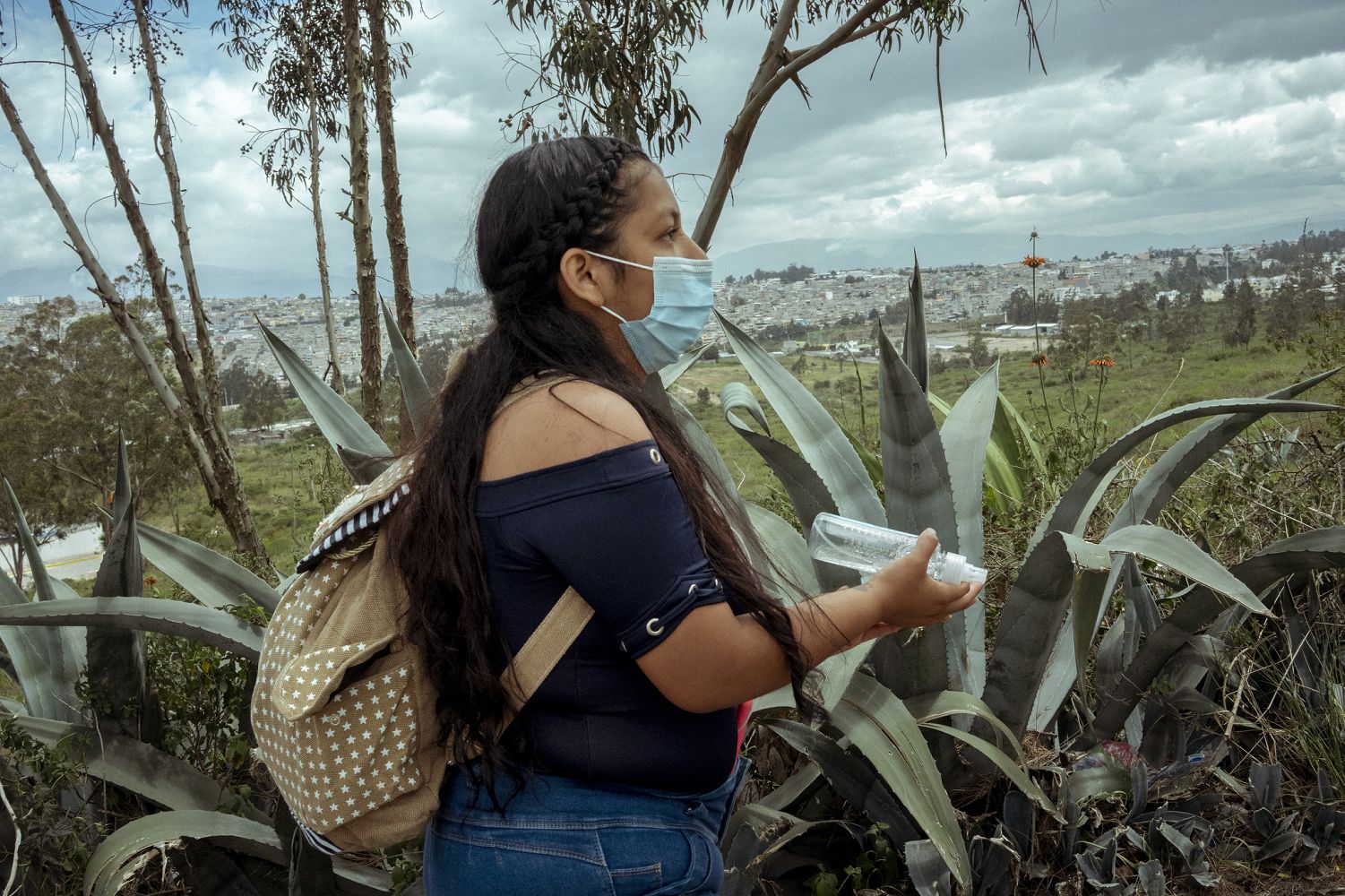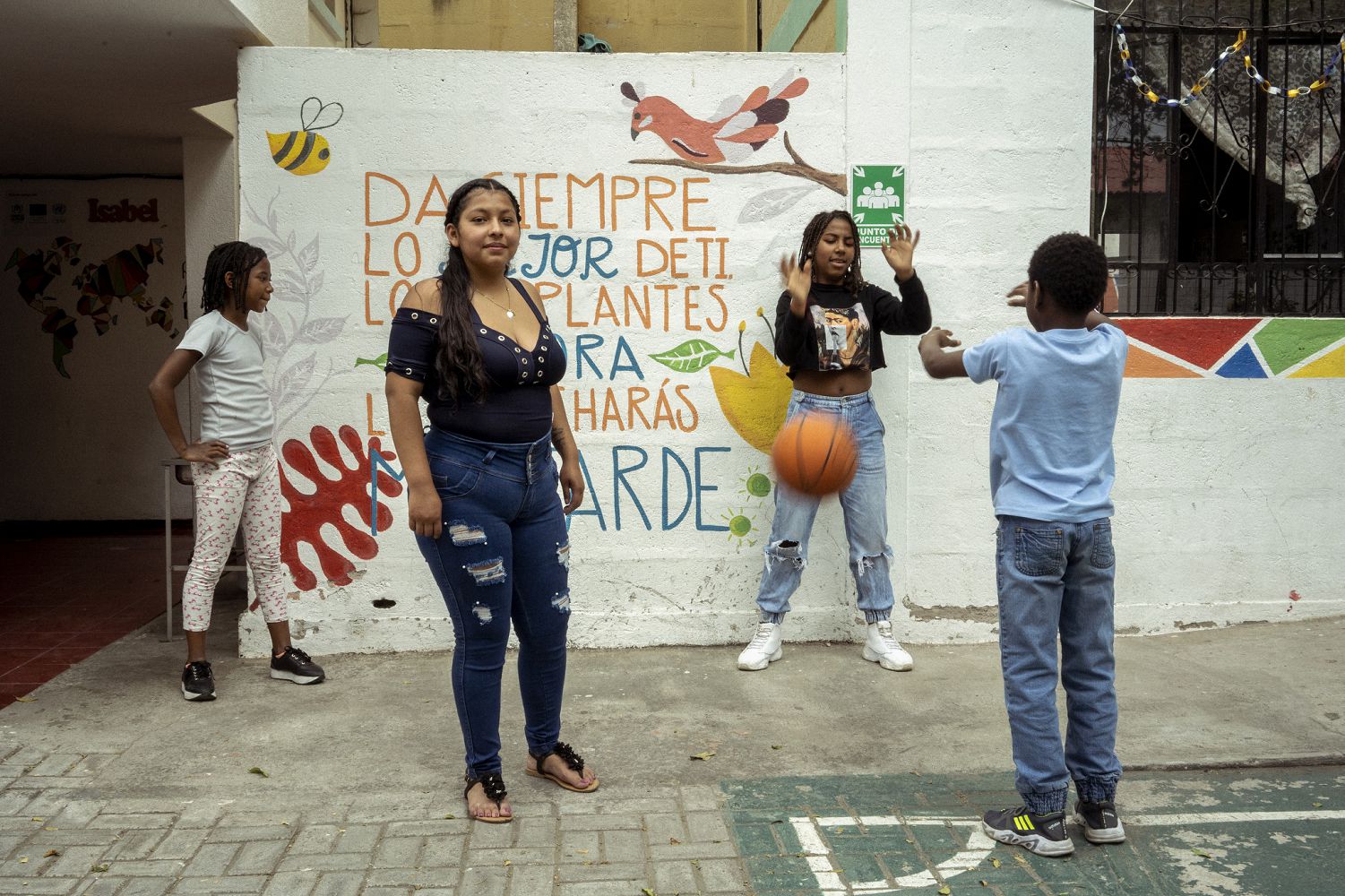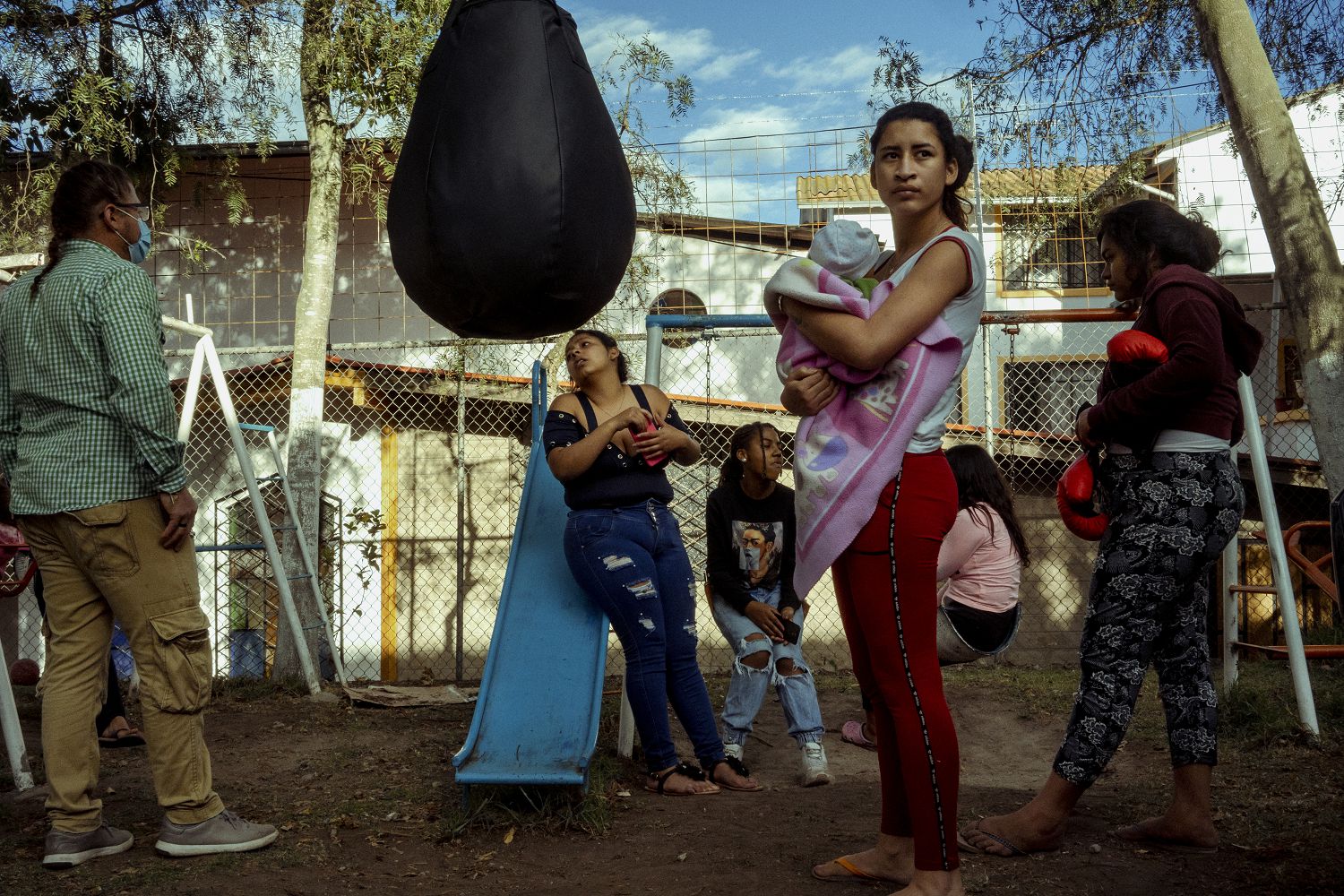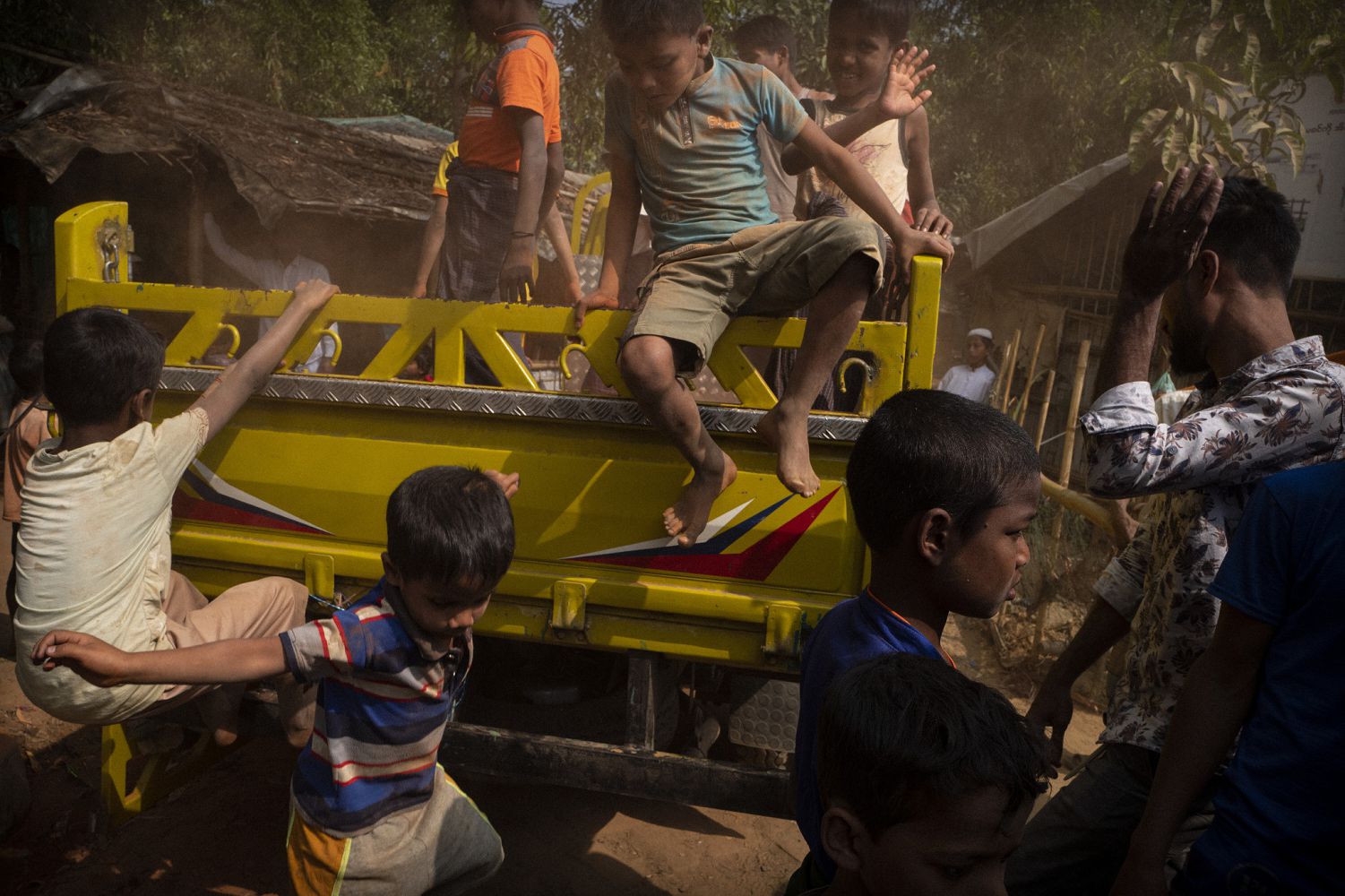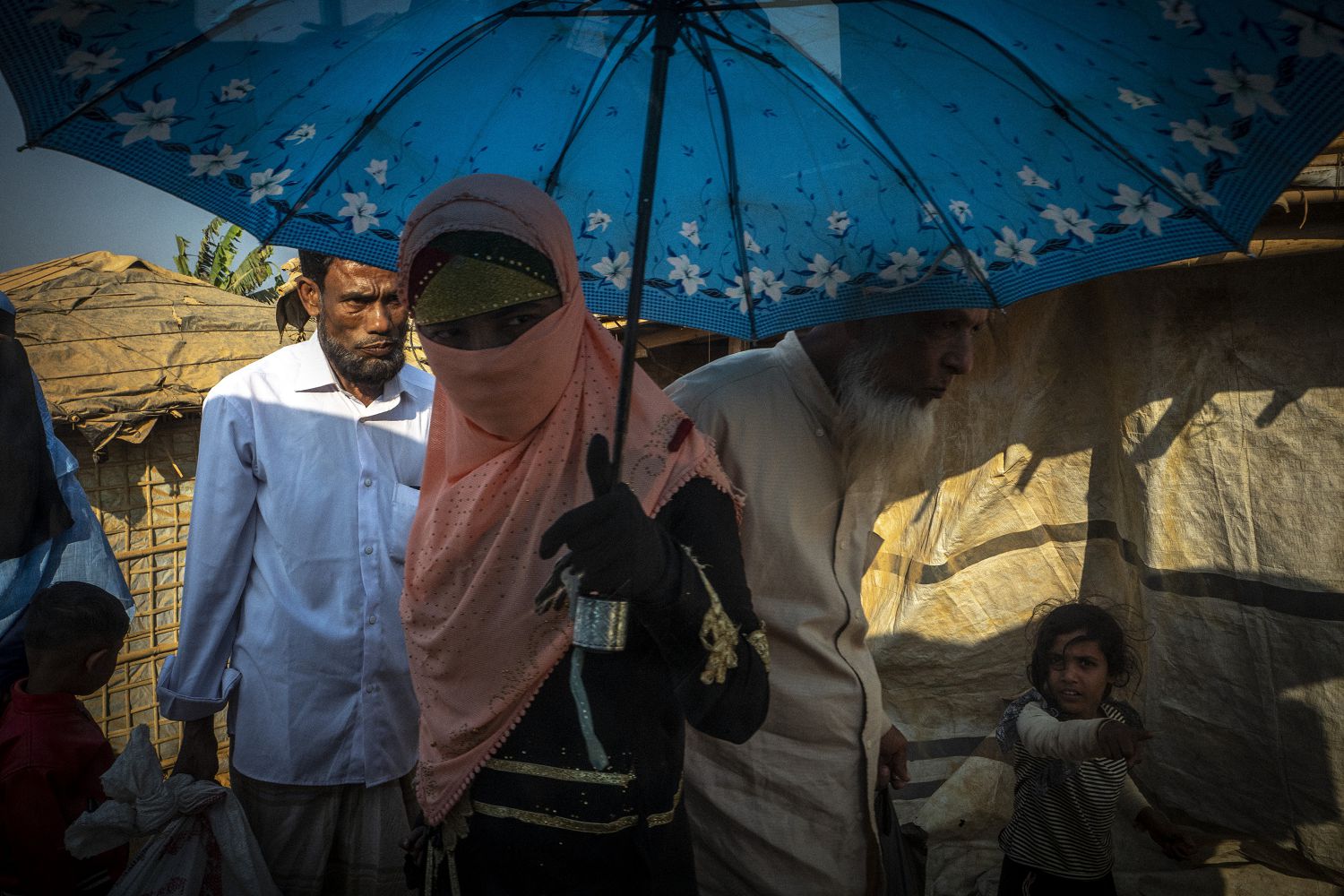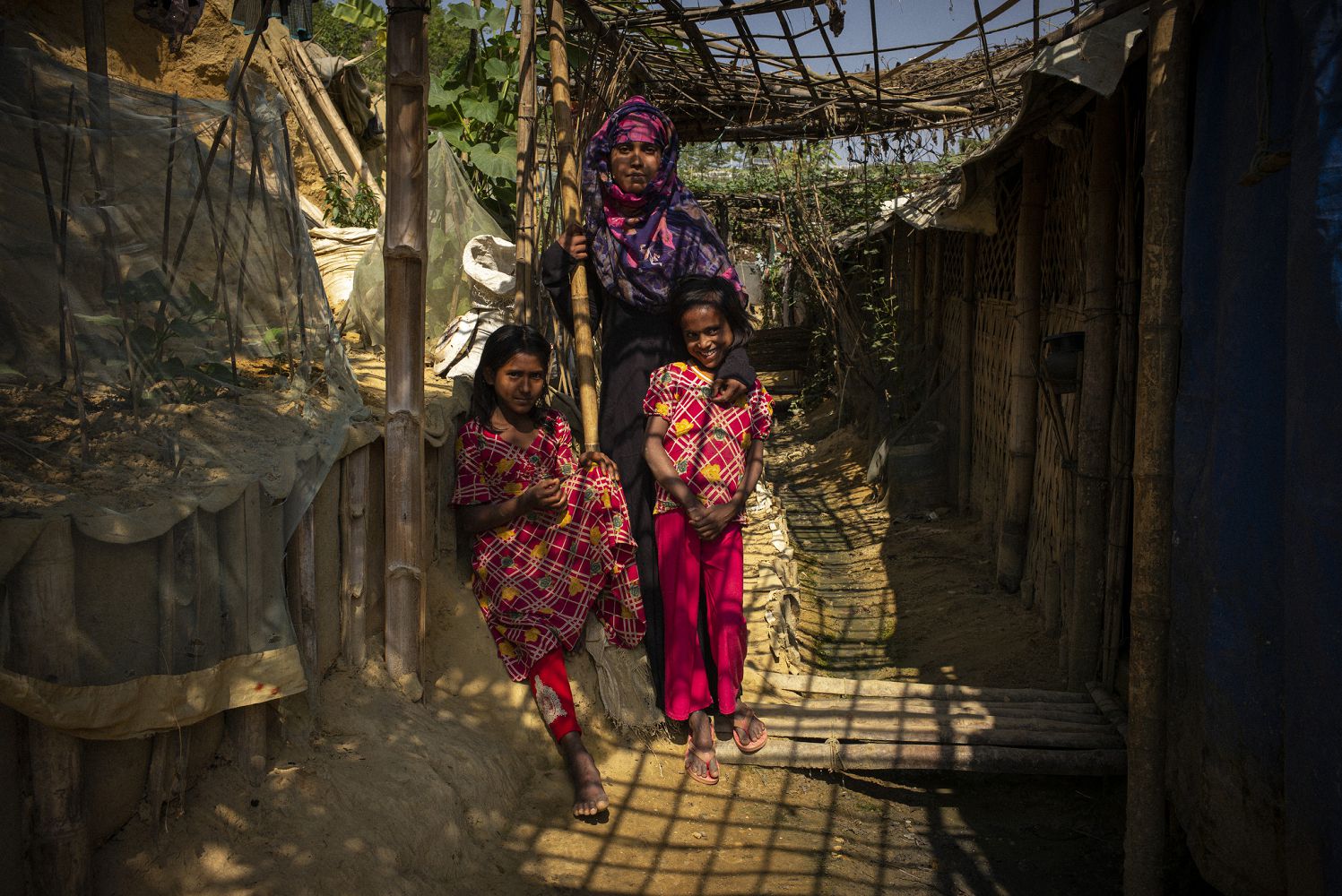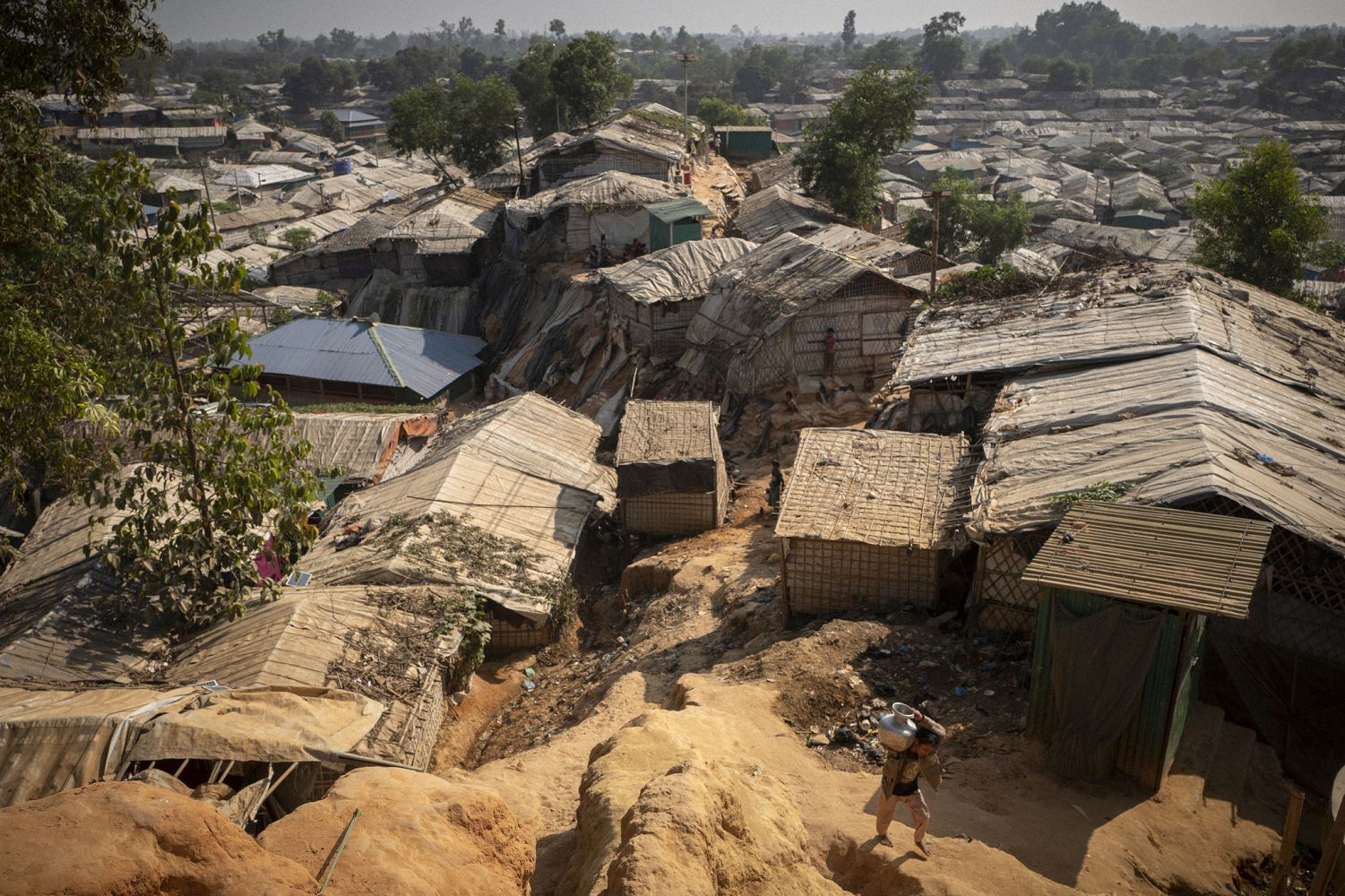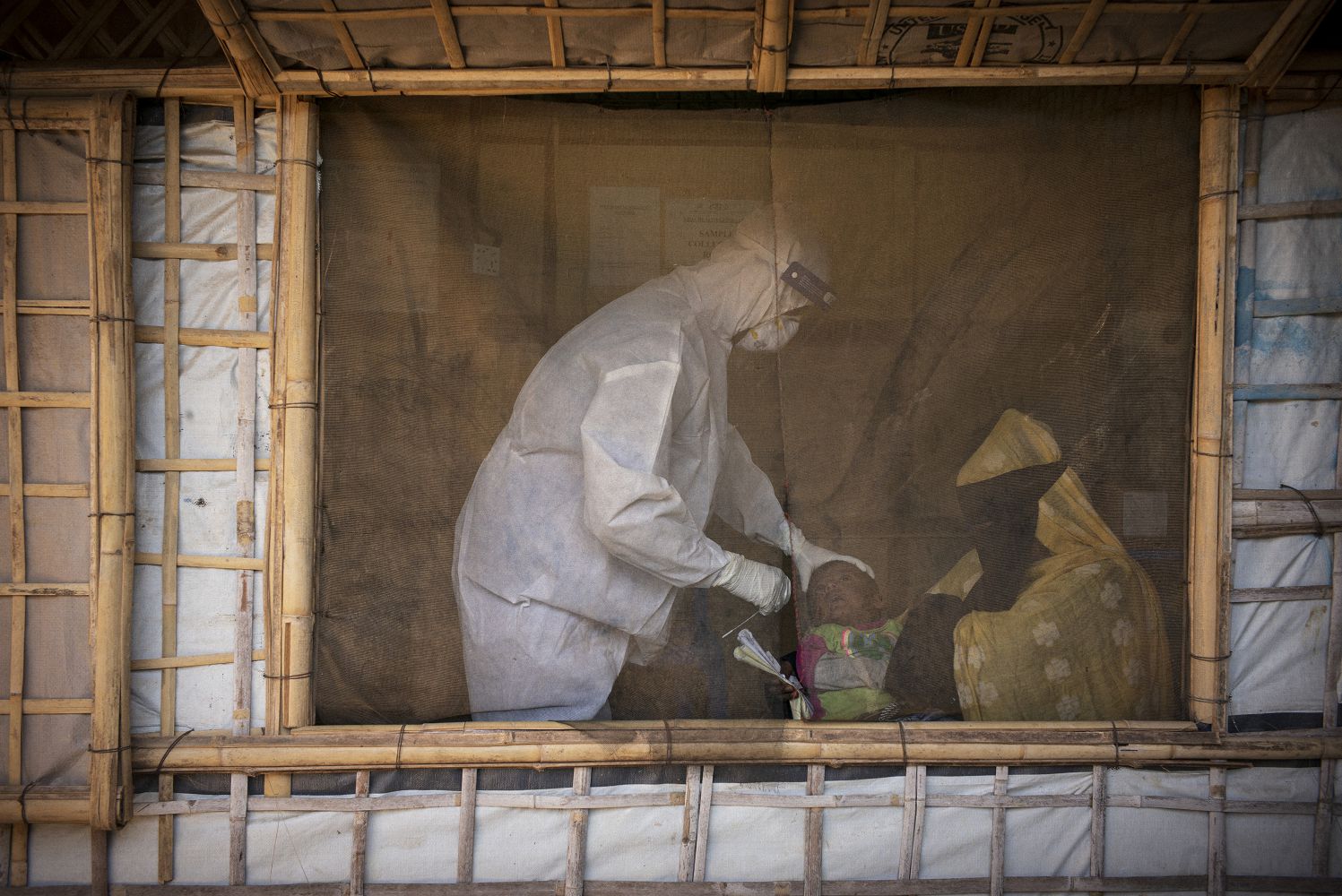#SAFERTOGETHER: COVID-19 KNOWS NO BORDERS
In early 2020, the COVID-19 pandemic brought chaos to the world. More than a year after the start of the pandemic, the findings are indisputable: people who were already in precarious situations before the pandemic got hit the hardest by the economic and social consequences of the crisis. This is true in Italy, France, or Hungary. It is also true in Uganda, Lebanon, Haiti, Ecuador, or Bangladesh.
Between November 2020 and February 2021, with the support of the European Commission, five renowned photographers from Agence MYOP travelled to five developing countries, to document the lives of the most vulnerable people around the world. This is the #SaferTogether campaign.
Guillaume Binet visited Haiti, Pascal Maitre went to Lebanon, Agnès Dherbeys travelled to Ecuador, Stephane Lagoutte reported from Uganda and Oliver Laban-Mattei travelled to Cox’s Bazar in Bangladesh.
#SaferTogether in Haiti
When the pandemic arrived in Haiti, it brought the country to a halt. Stores closed, tourists disappeared, and jobs vanished. The border between Haiti and the Dominican Republic has historically been very permeable, with individuals crossing it in both directions to get some work or to buy commodities. The lockdown made the border close overnight. In 2020, the EU activated €3 million to fight the spread of COVID-19 in Haiti, limiting the devastation of the pandemic among the most vulnerable.
#SaferTogether in Haiti
1/5COVID-19 prevention messages are painted at the border.
Haiti, 2020 ©Guillaume Binet/MYOP for the EU
#SaferTogether in Haiti
2/5People carrying commodities.
Haiti, 2020 ©Guillaume Binet/MYOP for the EU
#SaferTogether in Haiti
3/5Street scene in Cap Haitien.
Haiti, 2020 ©Guillaume Binet/MYOP for the EU
#SaferTogether in Haiti
4/5Wisner and his son in Cap Haitien. He lived in extreme poverty and tried to flee the country.
Haiti, 2020 ©Guillaume Binet/MYOP for the EU
#SaferTogether in Haiti
5/5Wisner is unemployed but gives a hand to his brother who owns a small shop.
Haiti, 2020 ©Guillaume Binet/MYOP for the EU
#SaferTogether in Lebanon
Lebanon has been dealing with a political, financial and economic crisis since 2018. The country also hosts around 1.5 million Syrian refugees on a total population of 6.8 million, and the Beirut port explosion in August 2020 brought more chaos in a country on the verge of implosion, where COVID-19 hit hard the economic ecosystem. In 2020, the EU provided €83 million in crucial humanitarian aid to support the basic needs of vulnerable Lebanese and Syrian refugees.
#SaferTogether in Lebanon
1/5The port explosion destroyed several buildings in Beirut.
Lebanon, 2020 ©Pascal Maitre/MYOP for the EU
#SaferTogether in Lebanon
2/5Aisha fled Syria with her children to escape violence.
Lebanon, 2020 ©Pascal Maitre/MYOP for the EU
#SaferTogether in Lebanon
3/5Inside the home of Aisha in the camp in Bekaa valley.
Lebanon, 2020 ©Pascal Maitre/MYOP for the EU
#SaferTogether in Lebanon
4/5Bar Elias refugee camp in Bekaa valley.
Lebanon, 2020 ©Pascal Maitre/MYOP for the EU
#SaferTogether in Lebanon
5/5In the home of a Syrian family in Bar Elias camp in Bekaa valley.
Lebanon, 2020 ©Pascal Maitre/MYOP for the EU
#SaferTogether in Uganda
Uganda is no stranger to epidemics. Before the coronavirus, there was Ebola. These epidemics burdened the region, particularly Uganda’s large refugee communities. These outbreaks taught Ugandan authorities and EU-supported humanitarian organisations an important lesson: act swiftly to prevent broader social and economic devastation. In 2020 alone, the EU contributed more than €34 million to address the needs of Uganda’s 1.4 million refugees and their host communities.
#SaferTogether in Uganda
1/5Women waiting for a medical check-up at the Kyaka II settlement.
Uganda, 2020 ©Stéphane Lagoutte/MYOP for the EU
#SaferTogether in Uganda
2/5Temperature is checked when entering the reception area.
Uganda, 2020 ©Stéphane Lagoutte/MYOP for the EU
#SaferTogether in Uganda
3/5Plots of land are given to refugees upon arrival, where they can plant.
Uganda, 2020 ©Stéphane Lagoutte/MYOP for the EU
#SaferTogether in Uganda
4/5Minonga and his family arrived from Congo and started a business with some farm animals.
Uganda, 2020 ©Stéphane Lagoutte/MYOP for the EU
#SaferTogether in Uganda
5/5Monthly distribution of money at the settlement to cover basic needs of refugees, many of whom are disabled, elderly or with family.
Uganda, 2020 ©Stéphane Lagoutte/MYOP for the EU
#SaferTogether in Ecuador
Ecuador is seen as a safe place in Latin-America. There are an estimated 415.000 Venezuelan migrants and refugees, along with 68.500 refugees from Colombia. When the coronavirus reached Ecuador, emergency shelters were forced to cut back on staff and services. Border closings stranded people, including children with no parents to look after them. The European Union is working with its partners in Ecuador to ensure the thousands of migrants and refugees in the country remain safe in these perilous times.
#SaferTogether in Ecuador
1/5Street scene in Santo Domingo.
Ecuador, 2020 ©Agnès Dherbeys/MYOP for the EU
#SaferTogether in Ecuador
2/5Dalis, from Columbia, with three of her daughters in her new home in Santo Domingo.
Ecuador, 2020 ©Agnès Dherbeys/MYOP for the EU
#SaferTogether in Ecuador
3/5Valeria, a 17-year-old from Colombia, in Quito.
Ecuador, 2020 ©Agnès Dherbeys/MYOP for the EU
#SaferTogether in Ecuador
4/5Valeria with her friends in front of Casa Isabel, an emergency shelter for migrant children.
Ecuador, 2020 ©Agnès Dherbeys/MYOP for the EU
#SaferTogether in Ecuador
5/5Kleidy, a 17-year-old from Venezuela, with her 2-month-year old baby near the shelter.
Ecuador, 2020 ©Agnès Dherbeys/MYOP for the EU
#SaferTogether in Bangladesh
In 2017, Myanmar’s government led an anti-Rohingya campaign that forced more than 500.000 of them to flee the country and take refuge in Bangladesh. In several weeks, one of the biggest refugee camps emerged near Cox’s Bazar. As of 2020, the Kutupalong camp hosts around 750.000 Rohingyas, living in very precarious situation. The EU contributions totalling €24.5 million in 2021 provide humanitarian aid for refugees, supporting numerous programs that directly limit the impact of COVID-19.
#SaferTogether in Bangladesh
1/5Half of the refugees in Kutupalong camp are children.
Bangladesh, 2021 ©Olivier Laban-Mattei/MYOP for the EU
#SaferTogether in Bangladesh
2/5Rohingya walk through one of the markets in Kutupalong camp.
Bangladesh, 2021 ©Olivier Laban-Mattei/MYOP for the EU
#SaferTogether in Bangladesh
3/5Jaan and her siblings are Rohingya refugees living in Kutupalong camp.
Bangladesh, 2021 ©Olivier Laban-Mattei/MYOP for the EU
#SaferTogether in Bangladesh
4/5A child carrying water in Kutupalong camp.
Bangladesh, 2021 ©Olivier Laban-Mattei/MYOP for the EU
#SaferTogether in Bangladesh
5/5A PCR test is carried out in Teknaf refugee camp.
Bangladesh, 2021 ©Olivier Laban-Mattei/MYOP for the EU

